It was a famous unsolved maths problem that had stood for hundreds of years – Fermat’s Last Theorem (FLT) – then along came Andrew Wiles, who solved it in 1994. That’s the beginning and end of it really, though the details of the efforts to solve it provide a fascinating tale. The main reason is that FLT is a seemingly simple problem, easily understood by anyone with a cursory understanding of high school maths.
Most of us have encountered plenty of solutions of the equation a2 + b2 = c2, which are known as Pythagorean triples (e.g. 32 + 42 = 52 ). But for the general equation an + bn = cn , what if n is greater than 2? Fermat claimed it wasn’t true; that is, there are no positive integers (counting numbers 1, 2, 3, 4, …) greater than 2 that fit the equation.
I was one of those high school students who came across FLT, and the added joy for me was that at that time, many moons ago, it was unsolved – Wiles had not performed his magic. And it might as well be magic, I’m afraid, as his proof is so complex that only a select group of mathematicians understand it. I have an honours degree in maths, and I am not in that group; far from it. So, many of us feel just a tad unsatisfied with the proof (as with the solution to the famous Four Colour Problem), and wonder if there just might be a more elegant and simple proof sitting out there somewhere, just waiting to be discovered.
Or rediscovered. You see, Fermat himself stated that he’d found a proof, but claimed he didn’t have room for it in the document he was annotating.
This and other historical details are included in an essay I wrote for a unit ‘The History of Mathematics’ while studying at the University of Tasmania (again, before Wiles). I’ve dug out a copy, which includes notes I’d added (and the proof for n = 4), and here it is. If it inspires you, you’re under 40, and you can solve it more elegantly than Wiles, you’ll likely be awarded a Fields Medal, the supreme maths prize which eluded him (he was over 40 years of age when he solved FLT).


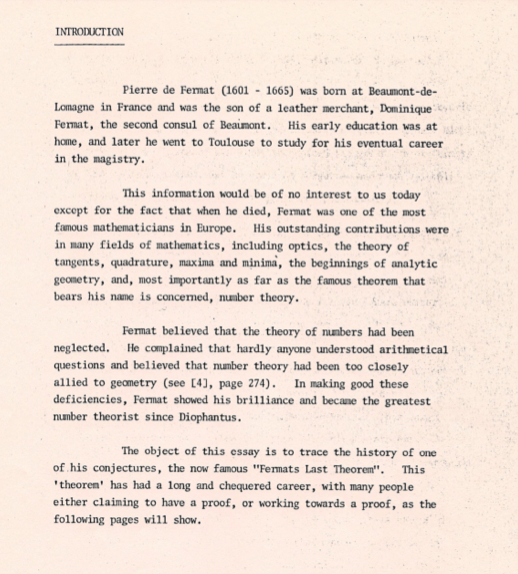
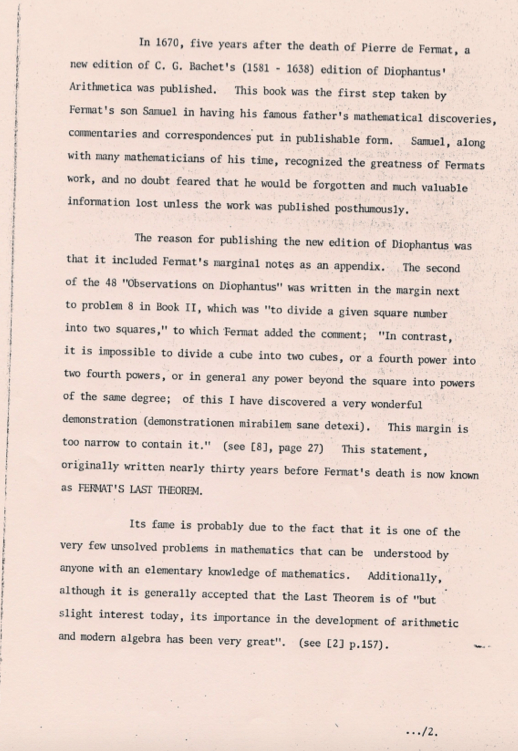
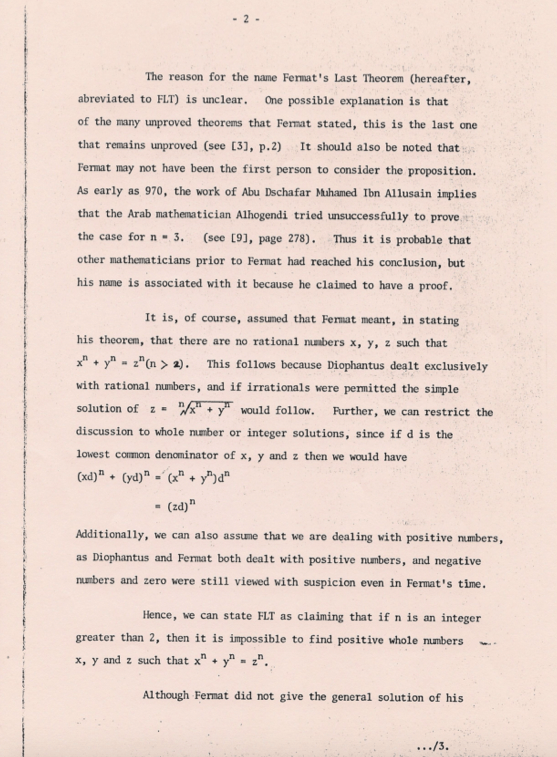
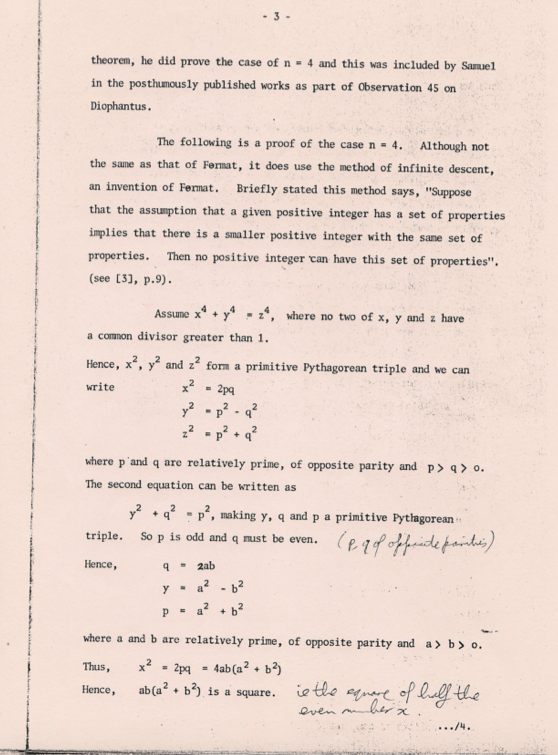
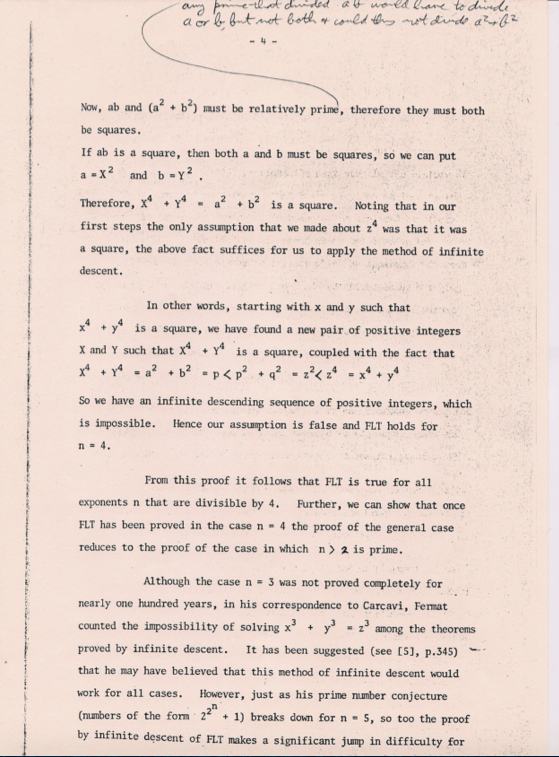
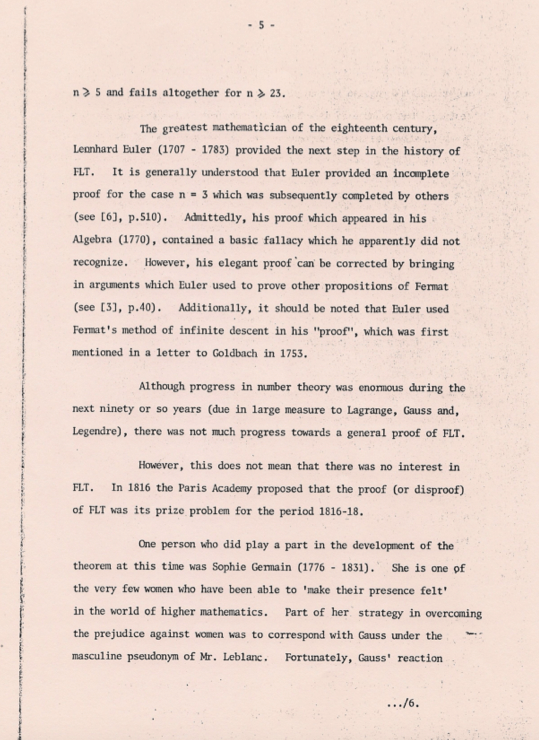

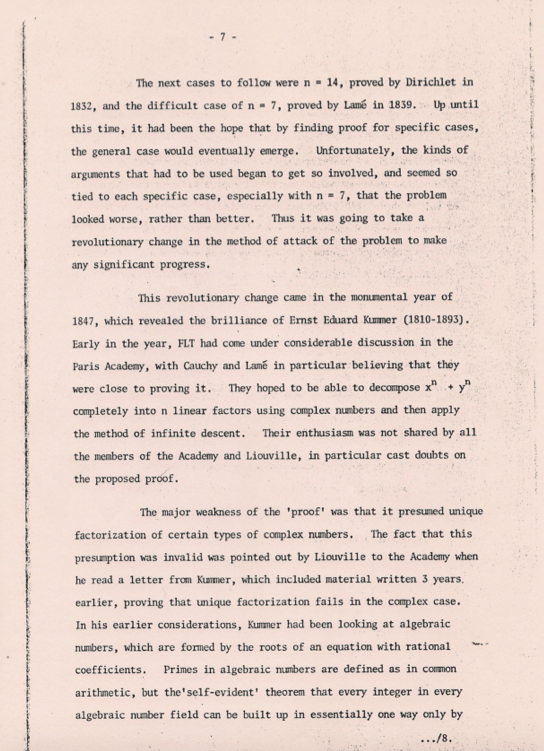
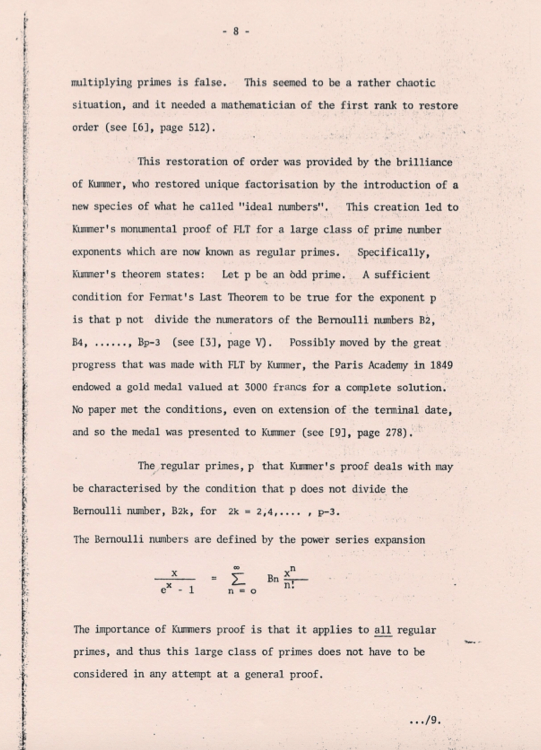
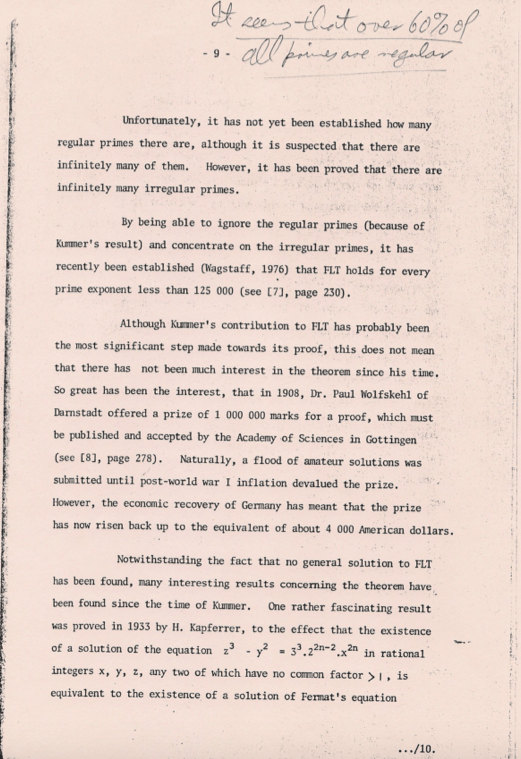

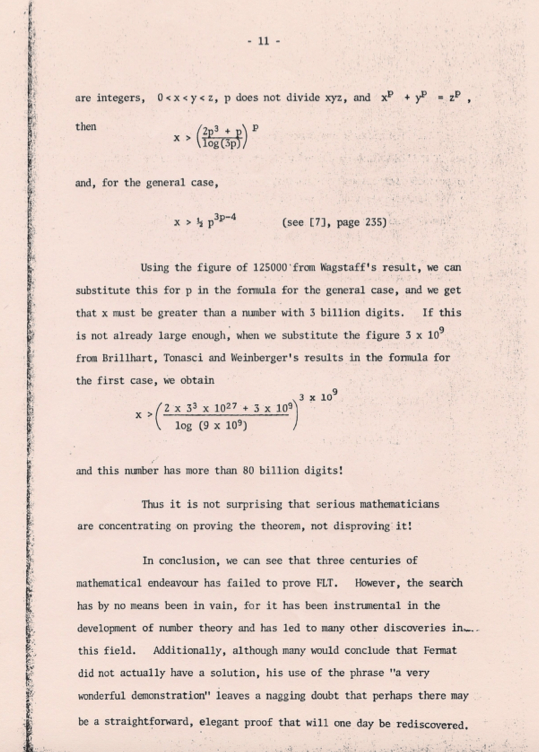
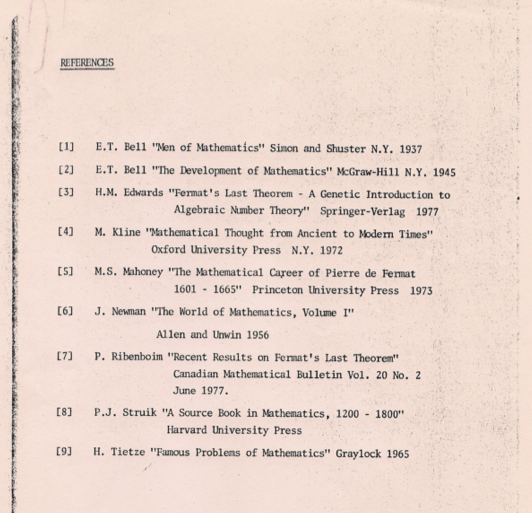
If you need any kind of online services like SEO,
Digital Marketing, Social Media Marketing, Website Development
and Graphics Designing etc. Then click here.
https://fukatsoft.com